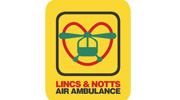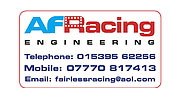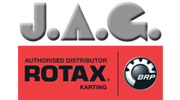Getting Started
What to do first?
What advice can you give to someone to Start Karting?
Remember it is extremely unwise to contemplate making your own kart (many classes require chassis to be homologated i.e. accepted by Motorsport UK or CIK before you can use them). Unless you have considerable knowledge of steering geometry chassis material qualities and weight distribution.
You are unlikely to be able to produce something which is safe let alone competitive and the cost of building from parts bought separately will exceed the purchase price of a second hand kart several fold.
All kart racing is divided into ages and classes each with their own specific rules. These will be described later.
All classes run with minimum weights. If you and your kart don’t reach this weight then you must add lead or similar ballast. If you are over the weight then you must diet!! If you are over about eleven and a half stone then restricted classes are unlikely to be of any use to you as you will be placed at a considerable disadvantage. Some clubs run heavyweight sections of some classes. You would have to check with your competition secretary to find out about these
What must I do first?
The answer to this question is quite definitely to go to a kart race meeting at your local track and watch the karts in action
Whilst at the track do the following:
- Speak to the club secretary to find out about membership, practice and race days and the cost.
- Look at the programme to find out the size of classes - especially the ones you are interested in.
- Talk to people racing in that class look at their equipment ask how much they paid for it and how
much they think they spend to maintain it. - Speak to the officials - Clerk of Course, Scrutineer they are likely to be able to offer unbiased
advice as they will not have an axe to grind for any particular class. - Look at the club notice board for second hand karts for sale or around the pits. Get an idea of the
price ranges for the classes you wish to join. Don't buy the first kart you see. - The officials of most clubs will gladly advise you on the suitability of a particular kart for you.
- Decide if you wish to proceed!!!
Getting started
Before you can think of racing there are a number of things you must do:
- Choose and buy a kart and all associated equipment.
- Learn to drive your kart.
- Get a licence to race.
- Join a club.
Look at each section in detail
Choosing a kart
Kart classes are divided first by age:
Class |
Age |
| Cadets | 8 - 13 years |
| Juniors | 12 - 16 years |
| Adults | 16 years and over |
You may move up classes either when you reach your birthday or at the end of the year your birthday is in. Once you have moved up you may not go back.
See ABKC website (http://www.karting.co.uk/ABkC/) for full details of each separate class.
You must consider your weight and depth of your purse. If you can't get near the minimum weight especially in classes where you can't tune engines you are unlikely to be competitive. Some classes require expensive regular maintenance to their engines. Whilst restricted classes such as TKM, Rotax and 4 strokes should be cheaper to run because they do not rev as hard.
Buying a kart
When you go to buy a kart there are several things you must pay particular attention to:
- Make sure that it is complete and eligible for the class. Little bits often cost a lot of money. You will need both slick and wet tyres so if either set is not included in the price then you will have to budget an extra £120 - £ 160 for the other set.
- Check the condition of tyres - each slick has a series of 'holes' in the rubber so you can see how much rubber is left and wets must have 2mm tread as a minimum.
- Check chassis for cracks, condition of cables, life left in brake pads. With the kart on a level surface lift each front wheel in turn to check if chassis is straight (both should lift same distance).
- Check engine for bore sizes - ask owner to tell you what standard bore is, as there is a limit to the number of re bores you can have.
- Ask who tuned the engine (if this is allowed). Preferably see it running - it's no good if it's slow!!
- Extras like stands, sprockets, tyre splitters, chain splitters, timing gear, covers, trailers etc are expensive and can make the price of a kart more attractive if included in the sale.
- In your receipt ask for a signed statement to say that the kart is currently legal for the class you wish to run it in (remember - each year regulations tend to change so a kart which has not been used for some time may need expensive changes to make it legal).
Learning to Drive
Always go to a practice session first - never just enter a meeting. Before you can race you will have to take an ARKS test, This involves a written and a driving test. You can do the test at a driving school or at LKRC. We do tests as part of a normal practice day. You will need to purchase an ARKS Pack which contains paper work needed for the examiner, a DVD and Motorsport UK regulation books. ARKS packs can be ordered, on-line from the Motorsport UK Purchase ARKS Pack here.
Familiarise yourself with the flag signals used on the track. Check out the Technical menu on the LKRC website for details.
You will need a CIK suit or a set of leathers a helmet that conforms to the latest regulations. DO NOT remove stickers from the exterior of the helmet. Always fasten your helmet it's useless if unfastened (rub a very small amount of washing-up liquid or demister on the inside of the visor to prevent steaming up). Boots which protect your ankles and gloves which cover all of your hands. Race gear can be obtained from places such as Demon Tweeks.
Don't put anything in your pockets and remove any jewellery. If you have a two pedal kart remember that the pedal on the right is the accelerator and the other is the brake. If in doubt take both feet off and press one pedal only. Then you will know what it does!! Three pedal karts are the same as the pedals in car left - clutch ; middle - brake ; right - go.
Once you start your kart drive slowly to begin with till you can feel the throttle. Remember karts have no differentials in the rear axle so you can’t free wheel round corners you must have some throttle on. Always brake in a straight line. If you start to spin (either by over braking or steering) remove the cause (either let off the brake or steer the other way). If your brakes fail put full lock on and spin the kart. If your throttle sticks on either pull the plug cap off or choke the carburettor fully with your hand. If you spin or leave the track put your hands up in the air and don't get out of your kart until you have looked behind to see if it's safe to do so. Get your kart to a safe place - then get behind barriers yourself. Always re-enter the pits at walking speed.
Getting a Licence
As explained previously you need to purchase your ARKS pack and take your test.
If you are 18 years old or over you are required to have a medical in order to complete your licence application form. The check covers eyesight heart condition diabetes limbs etc. If you have any problems in these areas you can apply direct to the Motorsport UK medical advisers for exemptions in certain circumstances.
Make sure you apply for your licence well before your intended first race meeting. Cadet and Junior drivers may use their ARKS pass sheet for their first race as they do not require a medical report. Normally licences are returned in 7 to 10 days but at the beginning of the year all drivers will be renewing their licences and there may be a delay.
When you receive your licence you will need to attach a passport photograph to the separate card on which you obtain signatures from the Motorsport UK Steward indicating that you have participated in a race meeting. You will also get a Blue Book from the Motorsport UK which covers all of the rules for all forms of racing. READ IT CAREFULLY all too often drivers get into trouble through ignorance of the rules pay attention to Section K.
If you turn up to race without your licence you will not be able to race unless you pay a fine and the Motorsport UK Steward has been informed.
Joining a Club
In order to race you must be a member of a club. Many people join more than one club to gain reduced entry fees and take part in each club championship. You should join the club at which you wish to race regularly and then weigh up whether it's financially worth your while to join any others.
Unlike many other clubs you do not need to be elected as a club member in kart clubs - you simply fill in a form and pay the fee.
Membership application forms can be downloaded from the LKRC website.











